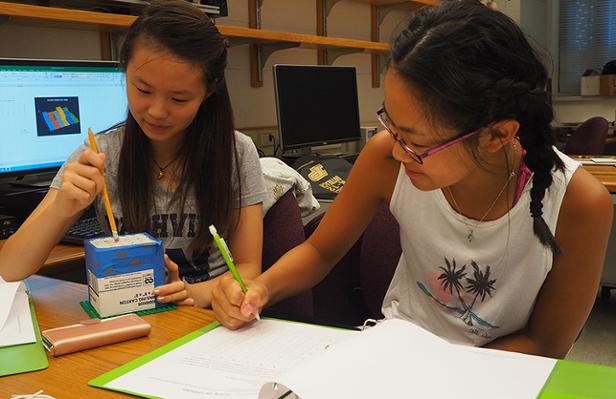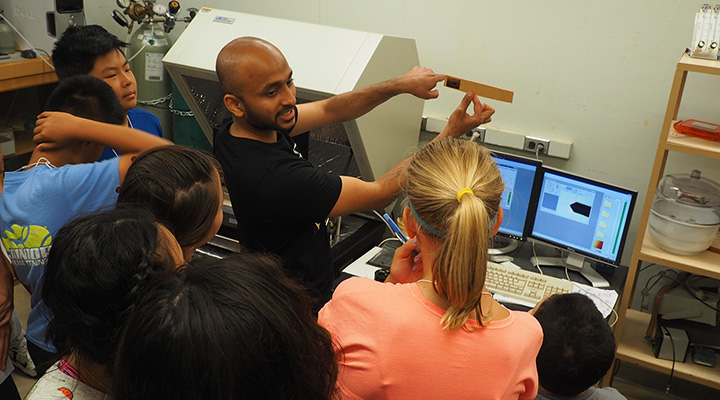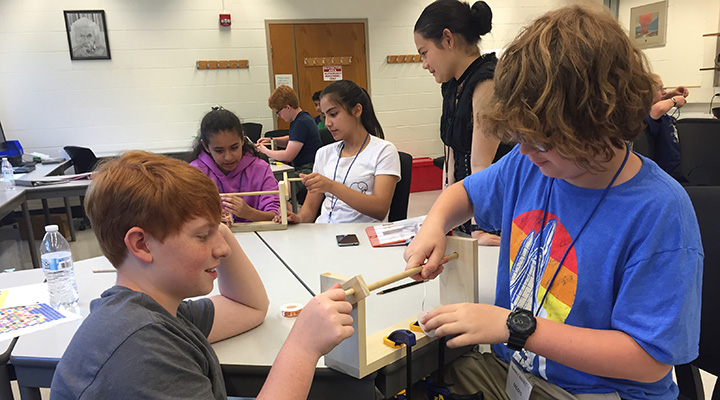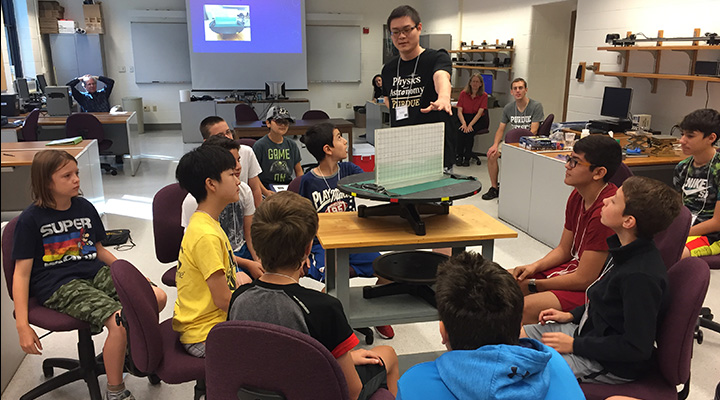
Physics Inside Out
By William Fornes
The Physics and Astronomy Outreach Program is always looking for new ways to bring science to K-12 students. It inspires and enriches the education of the students, and it addresses the call from federal funding agencies that require researchers to create a "broader impact" component of their projects that engages audiences outside of a university setting. The shared goal of the program and agencies is to build a scientifically informed society.
That's why David Sederberg, physics and astronomy outreach coordinator, spends a lot of time asking the question: "How can faculty and graduate students present their research in a way that sparks the interest of a younger audience?"
In one answer to this question, Sederberg and Leonid Rokhinson, a professor of physics and astronomy, created Physics Inside Out, a weeklong summer day camp for middle school students.
"Coining the name, Physics Inside Out," Sederberg recalls, "we wanted to convey the broad and diverse range of content in physics, from current research to fundamental principles."
First offered in 2017, Physics Inside Out uses classic and state-of-the-art experiments to introduce students to the tools of research. Physics and Astronomy faculty recognize the value of communicating to a younger audience and eagerly provide a half-day of experience in their research area.
Working one-on-one with Sederberg, faculty design activities that both engage students and explain topics and techniques relevant to their own research. Each day during Physics Inside Out, faculty and graduate students lead a short orientation on their topic, create a scenario for a research-based topic, then pose a question for the students to answer with their newly acquired knowledge.
In addition to science activities, Physics Inside Out students experience campus life and learn about resources at Purdue. Lunch breaks in the campus dining courts often include stops at campus destinations, such as the Birck Nanotechnology Center, the France A. Córdova Recreational Sports Center, and The VOSS Model, which is a scaled model of the solar system. Physics Inside Out students also learn about the personal side of science from the lives of real scientists. During each session, faculty and graduate students tell the story of how they became interested in science, factors leading to their inspiration, and the pathways that have led them to their chosen careers.
A team of 13 faculty and 16 graduate students, to date, have led students through their research. Service-learning students, mostly undergraduate physics or science education majors, volunteer as campus guides and activity aides.
Physics Inside Out is funded by the National Science Foundation and the Purdue University Department of Physics and Astronomy, and through the generosity of donors.
Sample Activities
The Rokhinson research group created an activity where students learn about atomic force microscopy by touring a lab that has an atomic force microscope (AFM) and then use building blocks to create a model "atomic surface."
They enclose the surfaces in a box and trade with other groups. Students then use a probing technique based on the pattern in an AFM to measure the variations in the surface inside the box.
Ken Ritchie, professor of physics and astronomy, begins his lesson into how to make a simple motor with the history of engines, allowing students to touch and handle working examples.
Student teams create their own working motor using a battery, a magnet and a little wire. Students photograph their motor in operation using an infrared camera to observe areas of greatest generation of heat.
Laura Pyrak-Nolte, distinguished professor of physics and astronomy, and graduate student Xuhui Zhou created an activity in microfluidics where students learn to run an electric charge through a saltwater droplet and measure the effects of charge on its shape.


